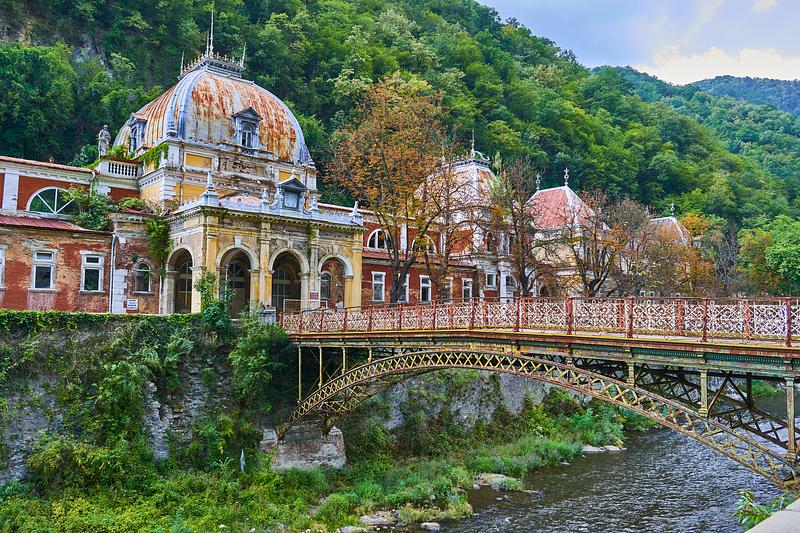Western RO: Neptune Baths shortlisted for Europa Nostra's 7 Most Endangered program



The Neptune Baths ensemble in the spa resort of Băile Herculane, in western Romania, has been included among the 12 most threatened heritage sites in Europe shortlisted for Europa Nostra's 2022 Seven Most Endangered program.
The selection was made taking into account the heritage significance and cultural value of each of the sites, the danger they are facing today, the local communities' level of engagement, and the commitment of public and private stakeholders to saving these sites, among others.
The list of the shortlisted sites is available here.
The 12 endangered heritage sites were shortlisted by an international advisory panel, consisting of experts in history, archaeology, architecture, conservation, project analysis and finance.
The final list of the 7 Most Endangered heritage sites in Europe for 2022 will be announced in the spring of 2022.
The 7 Most Endangered program is run by Europa Nostra in partnership with the European Investment Bank Institute. It also has the support of the EU's Creative Europe program. Launched in 2013, it is part of a civil society campaign to save Europe's endangered heritage. It raises awareness, prepares independent assessments and proposes recommendations for action. It also provides a grant of EUR 10,000 per listed site to assist in implementing an agreed activity that aids in saving it.
The current structure of the Neptune Baths was constructed between 1883 and 1886, according to the plans of the architect Alpár Ignat, as part of the Casino Ensemble, which was designed by the Austrian architect Wilhelm von Doderer. It houses 63 individual bathing or massage rooms and four communal pools.
After the fall of communism in 1989, the historic resort of Băile Herculane was abandoned and fell into decay, with the damage accelerating from 2004 onwards. Despite being labeled a Class A monument, the Neptune Baths have suffered continuous further degradation, because of water infiltrations and poor interventions. Two of its structural walls and a roof collapsed in 2019. A series of temporary interventions were carried out under the coordination of a team of volunteers from the Locus Association, with the support of civil society, but the building continues to degrade at a fast pace.
The Timişoara-based NGO Locus Association, which nominated the site for inclusion in Europa Nostra's program, was set up in 2017 by volunteer architecture professionals and young graduates with the aim of saving the historic thermal spa complex under the platform called Herculane Project.
(Photo: Ovidiu Ghitulescu | Dreamstime.com)
simona@romania-insider.com